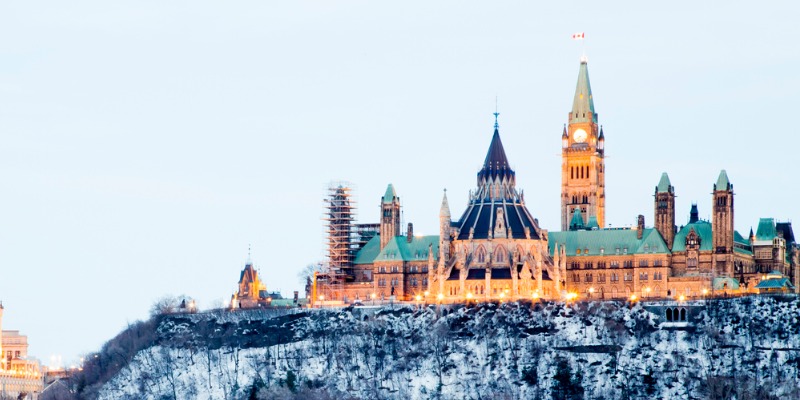Despite court ruling, Ottawa’s carbon tax remains fundamentally flawed

In a highly anticipated announcement, the Supreme Court of Canada today ruled that the federal carbon tax is constitutional. This decision allows the federal government to push ahead with its ambitious plan to ensure every province and territory has a price on carbon to reduce greenhouse gas (GHG) emissions. Leaving constitutional law aside, it’s worth reminding Canadians that the federal carbon tax still has several design flaws, which unnecessarily damage the economy.
To recap, the federal carbon tax was initially set to increase by $10 a tonne until it reached $50 per tonne in 2022. However, based on a new plan announced late last year, the carbon tax will increase by $15 per tonne (beginning in 2023) until it reaches $170 per tonne.
We acknowledge that setting a price on carbon is the most efficient (i.e. least costly) way to reduce emissions as it provides the flexibility for individuals and businesses to either pay the price of emitting or find cheaper ways to reduce emissions, rather than mandating one single approach through regulations.
However, several key conditions must be met for carbon pricing to deliver on the promise of cost-effective emissions reduction.
First, a carbon tax should be revenue neutral. Ottawa currently rebates only 90 per cent of the revenues in the form of lump-sum payments to households. The remaining 10 per cent is used to finance grants for energy efficiency projects.
More importantly, the way we recycle carbon tax revenues matters. To mitigate the damage on economic growth, revenues from the carbon tax should be used to reduce other more harmful taxes such as personal and business income taxes—something several Scandinavian countries have done in the past. In this way, economic incentives are improved as a method to increase economic growth. Using the revenues, or most of the revenues, from the carbon tax to finance a lump-sum rebate (similar to what the Trudeau government is doing) does not change the incentives for investment, work, savings or entrepreneurship, and thus does very little to foster economic growth.
So instead of issuing lump-sum rebates to households and providing grants for energy efficiency programs, Ottawa should use all carbon tax revenue to reduce business and personal income tax rates.
Second, a carbon tax should replace existing emissions-related regulations. The point of a carbon tax is to rely on prices and market decisions to drive a reduction in emissions. The price of the carbon tax allows individuals to make decisions about how best to respond to the cost of emissions, either by innovating, reducing emissions or transitioning to different types of production. Retaining existing regulation prevents some of these decisions, and in other cases, changes the alternatives available. In both cases, the regulations short-circuit the price mechanism intended by the carbon tax.
Indeed, the Trudeau government understands this, which is why it narrowed the scope of the Clean Fuel Standard (CFS)—a costly regulation requiring those who produce and import fossil fuels to reduce the carbon intensity of their products. Ottawa originally intended the CFS to cover all fuels (Canada is the first jurisdiction to attempt such broad coverage) but reduced the scope of the regulation. However, so far, there has been no GHG-related regulatory reductions following the implementation of the carbon tax. In fact, the Trudeau government is doing the opposite by planning to introduce even more regulations.
Third, measures to prevent carbon leakage—where firms reorganize their activities or relocate operations outside of the country to avoid the carbon tax—must be part of the design. Many economists argue for some type of border adjustments on imports that have GHG-related inputs and for exported goods subject to the carbon tax.
Ottawa included compensation payments called the Output-Based Pricing System (OBPS) with the intent of limiting the harm to sectors exposed to trade and competitive pressures, and to thereby mitigate the risk of carbon leakage. However, as shown in a recent study, the compensation system is not tied specifically to factors that determine a firm’s risk of reduced competitiveness.
As a result, some firms that lose significant international market share end up worse off—even under the OBPS compensation plan. It’s worth noting, however, that the government has committed to “exploring the potential of border carbon adjustments” in its new climate plan. Nonetheless, it remains uncertain whether the government will proceed with it.
Finally, economics informs us that the carbon tax rate should be pegged at what economists call the “social cost of carbon,” which is the future damage to society of one additional tonne of carbon emitted today. A recent interim report by the Biden administration estimates the social cost of carbon to be in the range of US$19 to US$89 per tonne of CO2 by 2030, depending on the discount rate used. This suggests that Canada’s new target of C$170 per tonne for 2030 is too high—even if the tax were implemented perfectly.
Overall, Canada’s carbon tax, albeit well-intentioned, has serious design flaws that unnecessarily hurt our economy. While tackling climate change and reducing GHG emissions remains a priority, Ottawa must design and implement a better, more effective carbon-pricing system.
Authors:
Subscribe to the Fraser Institute
Get the latest news from the Fraser Institute on the latest research studies, news and events.

